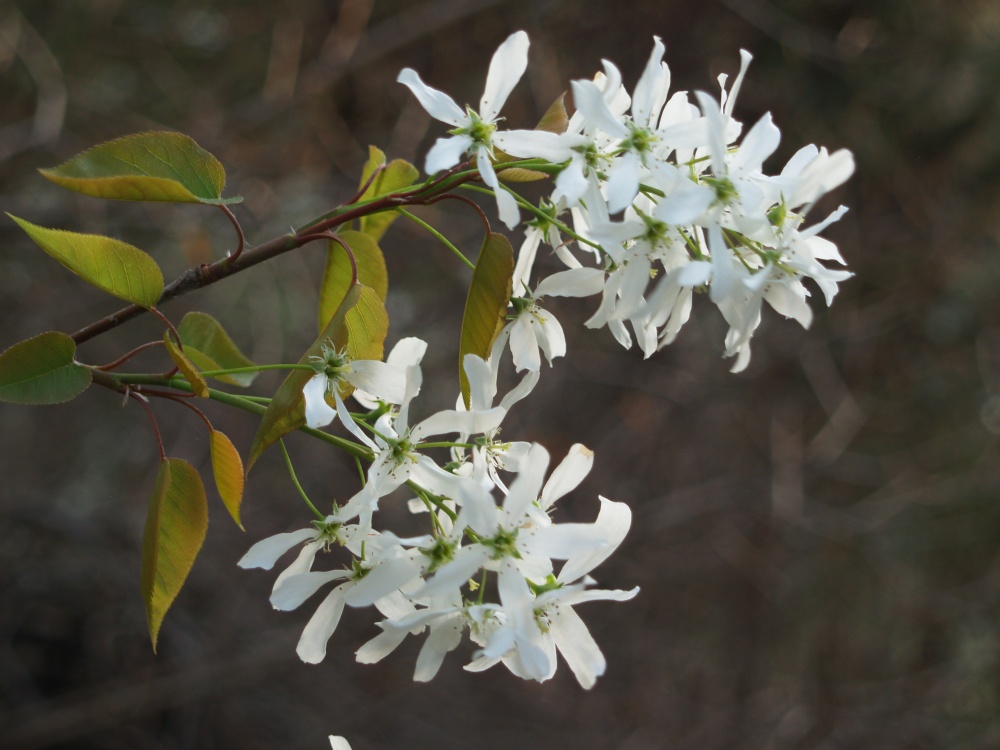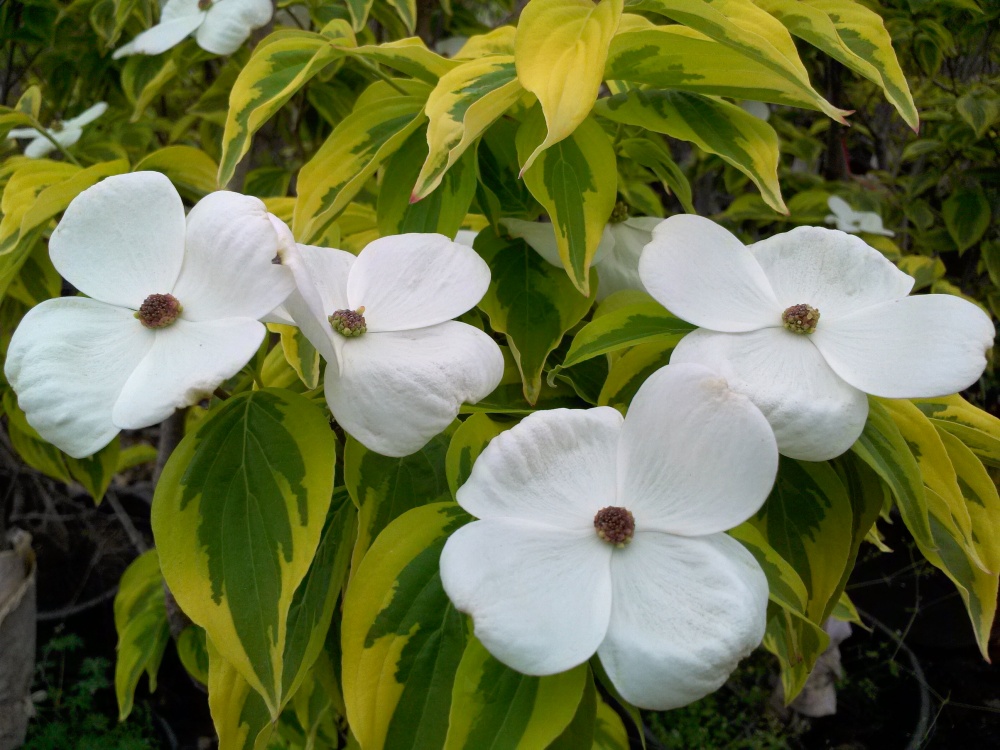Even with lengthening hours of daylight, my morning commute is driven in the dark, with few distractions besides the glare of headlights. At the work day’s end, snarled evening traffic often requires a more circuitous route home, and in early April the drive along winding roads is blessed with numerous redbuds, the occasional serviceberry, and dogwoods ready to burst into flower. Three weeks later, I will be mildly disappointed when the final dogwood blooms fade and the forest turns to lush green foliage.
Early spring flowers are often delayed for days in this cool, low lying garden, and while dogwoods approach peak bloom in the neighborhood, ones in this garden are a week behind. Redbuds are at their peak, and the top branches of the serviceberry that stretch into the sun are flowering, while lower branches are a few days off. Whatever the gardener’s opinion of native plants, and just as with non-natives there are good, poor, and unexceptional choices, there should be little argument that the three trees flowering along Virginia’s roadsides are splendid choices for the home garden.
Redbud (Cercis canadensis)
The native redbud is a wonderful tree, growing wider than tall, with delightful blooms in early spring and large, heart shaped leaves. Ideally, redbud will be planted with protection from the late afternoon sun, but trees will thrive in medium shade or full sun. Redbuds and dogwoods do not tolerate damp soils.
In recent years two long established, red leafed ‘Forest Pansy’ redbuds (above) in the garden have been lost, one to poor drainage and the other was crushed when a maple in the forest was toppled in a December ice storm. This spot was becoming too shaded, and though redbuds are an understory tree, they are found at the forest’s edge and prefer a part day sun. ‘Forest Pansy’ is a superb tree, but locating it with just the right degree of sunlight so it turns red, but doesn’t fade in summer’s heat, is a challenge.
There are green and red leafed weeping forms of redbud, which have the advantage of not consuming as much space as the typical wide spreading trees. The green leafed ‘Lavender Twist’ was a recent casualty of over planting, lost beneath a more vigorous purple leafed smoketree.
While fewer gardeners prefer yellow leafed trees, and many suspect that these will fade in the summer sun, ‘Hearts of Gold’ (above) and the more recent introduction ‘Rising Sun’ hold up well in the heat. Unfortunately, ‘Hearts of Gold’ has been overwhelmed by a neighbor’s Bald cypress, and though it survives it is hardly seen. The two redbuds that remain are the variegated ‘Silver Cloud’ (below), which is uncommon in garden centers, but much appreciated in this garden. 
Serviceberry (Amelanchier canadensis)
While redbud and dogwood have a typical, single trunk form, serviceberry (below) is often multi trunked, and even if maintained as a single trunk it will sucker, wanting to be a tall bush. To my eye, this moves it to the edges of the garden, and here it is planted to overhang a small pond at the forest’s edge where it receives a bit less sunlight than ideal. While serviceberry is included in lists for edible landscapes, I have never seen a fruit on this long established tree. Still, it is an excellent tree, perfectly suited to this informal garden.
Dogwood (Cornus florida)
While the native dogwood can fall victim to a variety of ailments, too much is made of this, I believe, for it is an exceptional, and usually long lived tree. Too often, a killing anthracnose (Discula destructiva) is credited for the demise of local dogwoods when the fungus is only a problem at mountain elevations. Certainly, leaf spotting, powdery mildew, and cankers are nagging problems, but dogwoods in this garden have annual bouts with each, and have survived for nearly three decades so far. New dogwood introductions promise spotting and mildew relief, though these varieties are new enough that they remain uncommon in the market.
For the gardener concerned by disease problems, hybrid dogwoods that flower two weeks later (‘Celestial Shadow’ dogwood, below, flowering late April to early May in this garden), and Chinese dogwoods (Cornus kousa, flowers in mid to late May) are resistant, and vigorous growers. The ideal planting, I think, is to plant one or more of each so that there are dogwoods, redbuds, and serviceberries flowering from early April into June. 